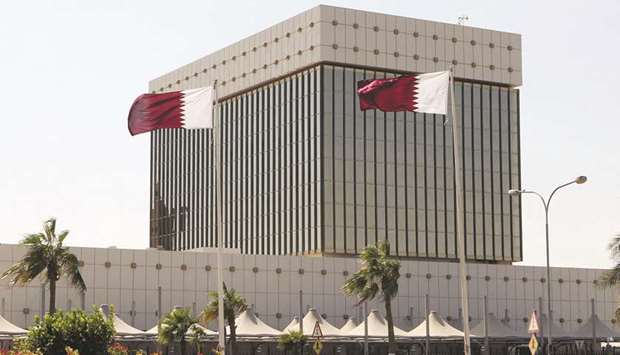The share of cross-border assets to gross assets got reduced by 1.5 percentage points to settle at 15% last year, Qatar Central Bank said in its 11th Financial Stability Review.
Qatar's banking sector has seen a decline in its cross-border exposure in 2019, the Qatar Central Bank said and noted the share of these assets to gross assets got reduced by 1.5 percentage points to settle at 15% last year.
All the components of assets including credit and investments declined but not for asset with foreign financial institutions (FFI), the QCB said in its 11th Financial Stability Review.
Assets with FFIs are generally short-term in nature and grew by 12.6% during the year over and above a growth of 41.8% recorded in 2018.
Thus, the banking sector appears to have increased the foreign currency liquid assets in the last two years, the QCB said.
Credit continued to hold major share (32.3%) of the cross-border assets followed by assets with FFI (28.6%).
Cross-border liabilities on the contrary, recorded substantial growth of 22.9% during the year.
The highest growth was recorded by non-resident deposits, which grew by 23.2% in 2019, the QCB said.
Other external liabilities including liabilities to FFI and external borrowings also recorded significant growth.
The increase in these external liabilities resulted in a spike in their respective share to total banking sector liabilities. As at end-December 2019, such liabilities cover around 34.8% of the total banking sector liabilities.
Detailed data on the geographical distribution of cross-border assets and liabilities of the domestic banks were examined. Earning assets of the domestic banks declined by 0.8% during the year. The decline was broad based across the regions.
According to the QCB, domestic banks have reduced their earning assets with all the regions except for European countries.
Assets with GCC countries, which hold a share of 15.8%, declined by 5.6%.
Assets with Europe, which cover the major share (39.8%) increased by around 2% during the year.
Decline in assets with GCC countries was mainly because of drop in credit assets, the report noted.
However, assets with FFIs and investments in GCC countries increased during the year.
Investment assets recorded the maximum growth among assets with European counties.
On the liability side, the QCB noted domestic bank’s liability (outside Qatar) increased by around 23.7% in 2019. Except for North American region, liability to all other region increased.
Liability with other Mena region increased the most by 73.9% while liability to other countries, which holds a significant share to the total liability (28.8%) increased by 37.5%.
Banks’ liability to the European region, which holds a share of around 55.5%, also increased significantly by around 22.3% during the year.
Domestic banks appear to have diversified their geographical reach for sourcing the non-resident deposits, a major source of external liability.
Deposits from European region increased by 32.9% while that from other Mena region increased by 158.5%, though from a low base. Accordingly, their share to total non-resident deposits more than doubled during the year.
Non-resident deposits sourced from “other countries” increased significantly by 26.1% over 2018.
Positive growth was recorded in case of liabilities to FFI across the region. Liabilities to FFIs from European region, which has a share of 69.8% of the total, increased by around 10%. Liabilities to FFIs from GCC region also increased significantly by around 20.4%.
Other borrowings (of the domestic banks) increased by around 6.5% during the year, mainly due to their borrowings from other countries. Borrowings from European region increased marginally by around 0.4% during the year, the QCB stated.

